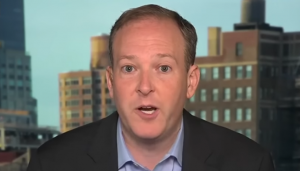Sri Lankan President Gotabaya Rajapaksa has fled his home on Saturday, shortly before protesters enraged by an unprecedented economic crisis stormed and overran his official residence.
After the president fled his residence, Prime Minister Ranil Wickremesinghe convened an emergency meeting with his cabinet ministers. Following the emergency meeting, Wickremesinghe resigned.
Also Read| Rise in Sri Lanka’s economic crisis should be warning to us all: United Nations
As people took to the streets to protest the government over the country’s worst economic crisis, hundreds of Sri Lankan protesters broke through barricades to enter the colonial-era parliament building, which has been converted into President Gotabaya Rajapaksa‘s official residence in central Colombo‘s high-security Fort area.
Protesters ran into the president’s residence, chanting ‘Gota go home,’ and referring to the president by his nickname.
Also Read| 71 million people pushed to poverty due to inflation after Russia-Ukraine war: UN
The current economic crisis in Sri Lanka is the result of poorly timed tax breaks, poor project investments, and Covid-imposed restrictions.
A timeline of the crisis in Sri Lanka-
2019 – The Sri Lankan government announced several tax cuts, resulting in a significant decrease in revenue. This occurred at a time when the historically weak government finances were still looking for ways to pay off the sovereign bonds that Sri Lanka’s governments had been issuing without provision for repayment for the previous 13-14 years.
Also Read| Rise in Sri Lanka’s economic crisis should be warning to us all: United Nations
Sri Lanka’s international debts have grown unmanageably large. The country now owes approximately USD 7 billion. One of its debts is a one-billion-dollar international sovereign bond that matures in July. Sri Lanka’s public debt has risen (in projection) from 94% of its GDP in 2019 to 119% of GDP in 2021, according to the International Monetary Fund (IMF) in early March.
2020– Sri Lanka’s foreign exchange reserves have declined by 70% since January 2020. This slowed its imports, resulting in a severe shortage of several essential items. Its currency has been significantly devalued.
The loan arrangements with China also contributed to the economic crisis in Sri Lanka. The majority of the loans it received from China over the last decade were used to fund low-return projects like the construction of ports, airports, and coal power plants. The loan was nearly USD 5 billion.
Also Read| Talks with IMF difficult due to bankruptcy: Sri Lankan PM Ranil Wickremesinghe
Pandemic: Tourism, one of its major contributors, was severely impacted by the pandemic. Bringing the industry to an all-time low. When the pandemic appeared to be over and travel restrictions were lifted, tourist inflows increased, with nearly 25% of visitors coming from Ukraine and Russia until February.
However, the impact of the Russia-Ukraine conflict filtered down, and tourist inflows from these countries ceased. Its traditional tourist sources, India, China, the United Kingdom, and Germany, have yet to return to pre-Covid levels.
With the Russia-Ukraine war dragging on, countries already under pressure from the knock-on effect of the Covid-19 pandemic risk experiencing the same economic crisis as Sri Lanka, the UN warned, urging the international community to implement radical financial measures to assist debt-burdened countries.






